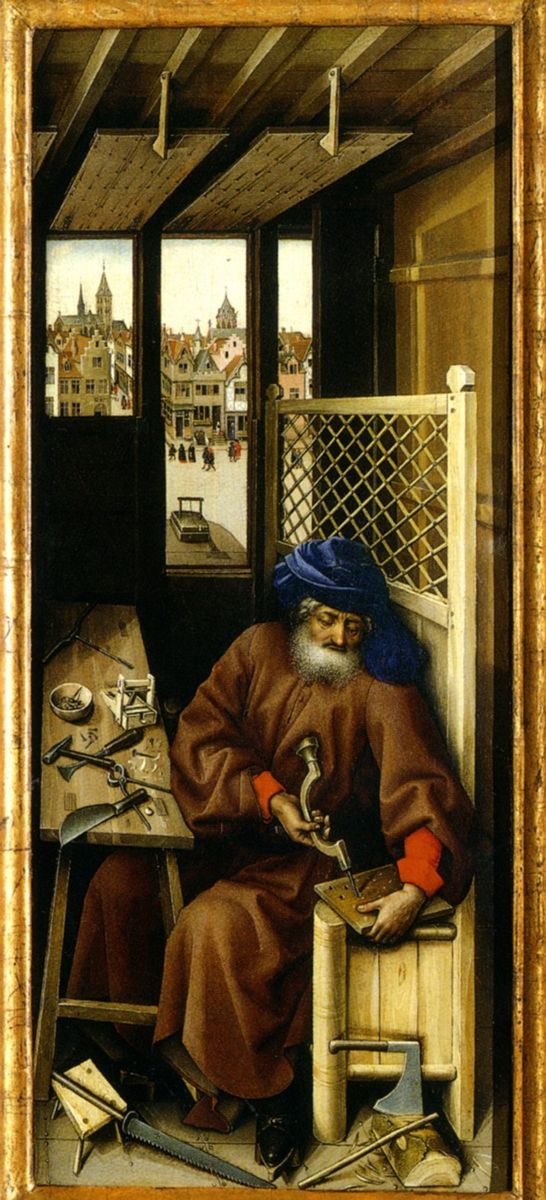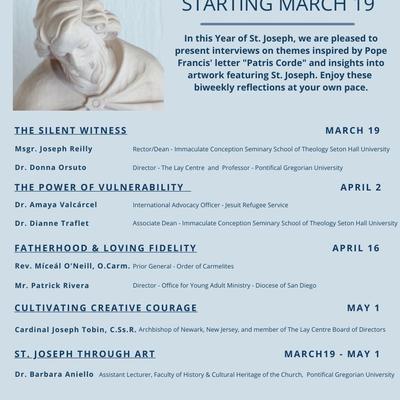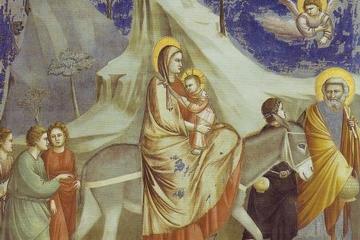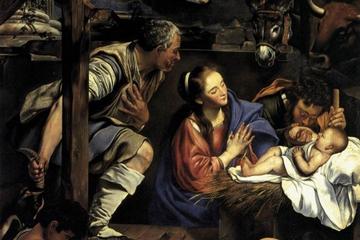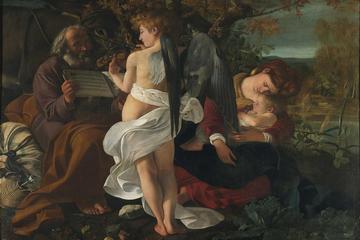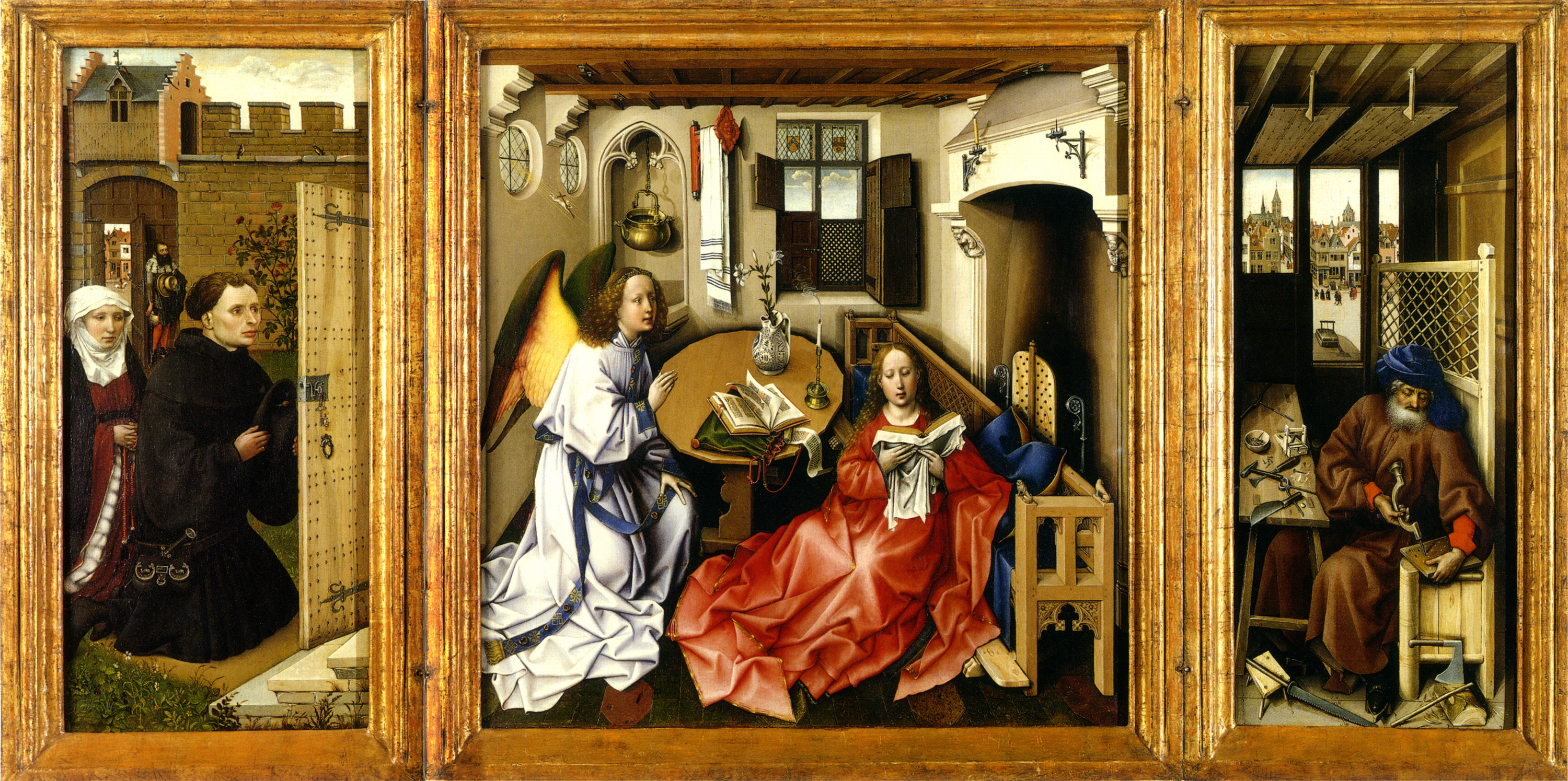
By Barbara Aniello
Rome - The angel’s lips are sealed after the proposal, the smoking candle burns out as the Spirit passes, the pages of the book are blown open by the holy wind: Our Lady has spoken her fiat.
Two silent witnesses watch the scene. Meanwhile, in his workshop, Joseph gets on with his work. Surrounded by his tools, he strives to protect the family entrusted to him by the Most High. He has completed two mousetraps: One is already in use on the windowsill and another is lying on his workbench. With the classic snap mechanism, the workmanship of this unique device, made of wood, recalls the cross. Between the rope and the beam that supports the bait, we recognize the classic Tau.
The mouse has always been associated with evil, disease and death. By keeping the unclean animal away from his Son and Mother, Joseph exorcizes its diabolical effects. Moreover, the cross, an omen of the destiny of God incarnate, becomes the “bait” to overcome sin. As St. Augustine writes: “The devil exulted when Christ died, and by that very death of Christ the devil was overcome: He took food, as it were, from a trap. The cross of our Lord became a trap for the devil; the death of the Lord was the food by which he was ensnared.”
Now, with the drill in his hand, Joseph makes the holes necessary for a fireguard: we can see a similar one in the fireplace next to Mary. The hearth, symbol of the cohesion of family affections, is lit by the faith of Mary, who has just pronounced her fiat. She is immediately protected by the industrious solicitude of Joseph who, like a paternal fireguard, protects the sacred nucleus with the power of vulnerability, by the strength of his limitations. As the holes are in relation to the table, so the stigmata will be to the cross: the vulnerability of the Son will become his strength. The Almighty emptied himself (kénosis), became flesh. And his flesh redeemed the world.
Listening: 'Vergine Bella' - Guillaume DuFay (1397-1474) Click to listen to a recording made by Mignarda at the Shrine Church of St. Stanislaus, Cleveland, Ohio. Vergine bella is Guillaume DuFay's musical setting of Petrarch's devotional poetry, performed in accordance with the original clef designations from Bodleian Library ms. Canonici 213 with the untexted lower parts here played on the lute.
Image - 'The Annunciation Triptych' (Mérode Altarpiece) c. 1425 by Robert Campin - Public domain Wikimedia.
Dr. Barbara Aniello is an art historian, musicologist and cellist. She is currently an associate lecturer at the Pontifical Gregorian University in the Faculty of History and Cultural Heritage of the Church.
